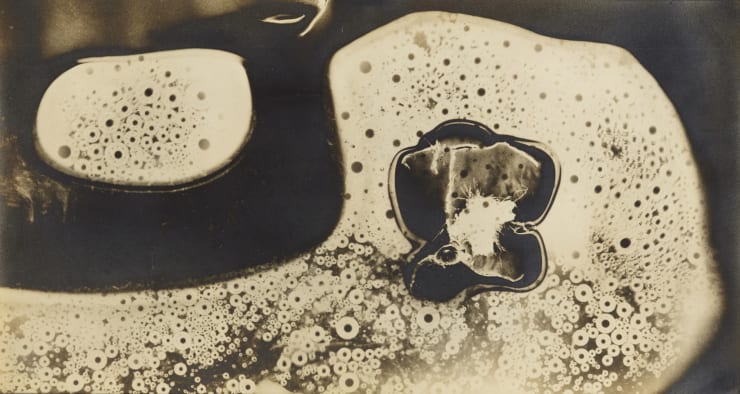Kansuke Yamamoto
Images
Overview
Kansuke Yamamoto, a Surrealist poet and photographer, was born in Nagoya in 1914 and died there in 1987. Yamamoto’s father, Goro Yamamoto, was a photographer working in the Pictorialist style and owner of Nagoya’s first photography supply store. In this environment, Yamamoto naturally absorbed the mechanics of photography, but was initially ambivalent about the medium. He began to write poetry in 1930, and entered Tokyo’s Meiji University in the French Literature Department where he was exposed to the latest Western art movements and theories, such as Surrealism, Dadaism, Bauhaus, Neue Sachlichkeit. Attracted to Surrealism, a movement concerned with the unconscious, chance, and unexpected juxtapositions, Yamamoto returned return to Nagoya in 1931 and began, at age of 17, to “practice Surrealism in photography”.
In Yamamoto’s case, the 1937 exhibition “Kaigai Chogenjitsushugi Sakuhinten” (Exhibition of Overseas Surrealist Works) inspired him to publish the Surrealist poetry journal Yoru no Funsui (“The Night’s Fountain”), but Yamamoto was forced to cease publication after the fourth volume due to censorship from the “Thought Police” (formally: Special Higher Police / Tokubetsu Koto Keisatsu). Avant-garde thought was under-attack. Some artists were jailed, while others lived in fear. Yamamoto and his colleagues continued to operate carefully and quietly “under the radar” through the wartime years with a strong sense of community. Yamamoto was a key member of several artist and poet groups including VIVI (which he founded) and with the avant-garde poets’ group VOU, organized by Katsue Kitasono, where Yamamoto contributed poetry and visual works to the group’s journal and “Keisho” exhibitions until 1978, when VOU dissolved.
Yamamoto’s work is included in the collections of the Nagoya City Art Museum, Tokyo Photographic Art Museum, Santa Barbara Museum of Art, the J. Paul Getty Museum, The Art institute of Chicago, and others.
Works
Exhibitions















